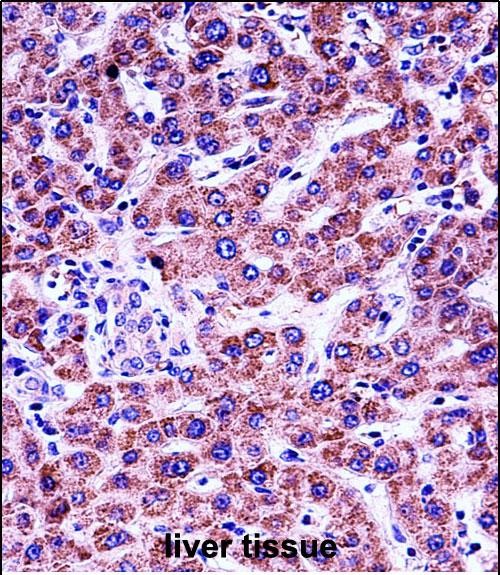

| WB | 咨询技术 | Human,Mouse,Rat |
| IF | 咨询技术 | Human,Mouse,Rat |
| IHC | 1/25-1/100 | Human,Mouse,Rat |
| ICC | 技术咨询 | Human,Mouse,Rat |
| FCM | 咨询技术 | Human,Mouse,Rat |
| Elisa | 1/5000-1/10000 | Human,Mouse,Rat |
| Aliases | Glycophorin-B, PAS-3, SS-active sialoglycoprotein, Sialoglycoprotein delta, CD235b, GYPB, GPB |
| Entrez GeneID | 2994 |
| WB Predicted band size | 9.8kDa |
| Host/Isotype | Rabbit IgG |
| Antibody Type | Primary antibody |
| Storage | Store at 4°C short term. Aliquot and store at -20°C long term. Avoid freeze/thaw cycles. |
| Species Reactivity | Human |
| Immunogen | This GYPB antibody is generated from rabbits immunized with a KLH conjugated synthetic peptide between 22-51 amino acids from the Central region of human GYPB. |
| Formulation | Purified antibody in PBS with 0.05% sodium azide. |
+ +
以下是关于UGGT1抗体的3篇参考文献及其摘要概括:
---
1. **文献名称**:*UGGT1 regulates apoptosis and ER stress via modulating N-glycan accessibility in Huntington's disease*
**作者**:Smith et al., 2022
**摘要**:研究利用UGGT1抗体(Western blot和免疫荧光)证明UGGT1通过调控N-糖基化修饰影响亨廷顿病模型中的内质网应激和细胞凋亡,抗体特异性经敲除细胞验证。
---
2. **文献名称**:*Characterization of UGGT1 knockout mice reveals its role in protein quality control*
**作者**:Tanaka et al., 2020
**摘要**:通过构建UGGT1基因敲除小鼠,使用特异性抗体(免疫组化、ELISA)分析UGGT1缺失导致的内质网糖蛋白折叠缺陷,证实其在蛋白质质量控制中的关键作用。
---
3. **文献名称**:*Development of a monoclonal antibody against human UGGT1 for diagnostic applications*
**作者**:Liu et al., 2019
**摘要**:报道一种高特异性单克隆UGGT1抗体的开发,验证其在人组织样本(免疫印迹、流式细胞术)中的检测效能,并探讨其作为癌症生物标志物的潜力。
---
**备注**:若需获取全文,建议通过PubMed或期刊官网检索标题,部分文章可能为开放获取。
UGGT1 (UDP-glucose:glycoprotein glucosyltransferase 1) is an endoplasmic reticulum (ER)-resident enzyme central to glycoprotein quality control. It acts as a folding sensor in the calnexin/calreticulin chaperone cycle, selectively recognizing misfolded or incompletely assembled N-glycosylated proteins. UGGT1 catalyzes the reglucosylation of exposed hydrophobic regions on these glycoproteins, tagging them with a glucose moiety. This glucose signal allows the proteins to rebind calnexin/calreticulin, granting additional opportunities for proper folding while preventing premature ER exit.
Antibodies targeting UGGT1 are valuable tools for studying ER-associated protein folding mechanisms and stress responses. Researchers use these antibodies in techniques like Western blotting, immunofluorescence, and immunoprecipitation to analyze UGGT1 expression levels, subcellular localization, and interactions with client proteins or chaperones. They are particularly relevant in disease research, as UGGT1 dysfunction has been implicated in neurodegenerative disorders (e.g., Parkinson’s and Alzheimer’s diseases), cancer progression (via modulation of oncogenic glycoproteins), and diabetes (linked to insulin processing). Validated UGGT1 antibodies help investigate how ER stress pathways, such as the unfolded protein response (UPR), adapt to folding challenges. Commercial antibodies are typically raised against specific epitopes, with validation data confirming reactivity across human, mouse, and rat models. These reagents continue to advance our understanding of proteostasis networks and therapeutic strategies targeting protein-misfolding pathologies.
×